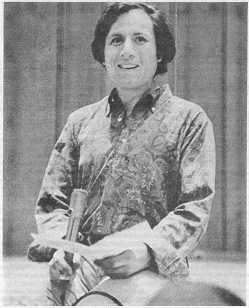Eugene Schoenfeld M.D.
HipPocrates

QUESTION: Would you please explain what tachycardia is? I am undergoing treatment by an analyst for anxiety which is causing tachycardia in my heart. However, neither he nor my M.D. will explain tachycardia to me.
I also wonder if getting stoned on grass would be detrimental to me? My analyst doesn’t care if I smoke weed. The tachycardia doesn’t occur when I’m stoned, but sometimes happens when I’m crashing to just relaxing but never when I am uptight, so I am confused as to its being caused by anxiety. Can you explain?
ANSWER: Tachycardia means simply a rapid heart beat and is a symptom, not a disease. Paroxysmal tachycardia is a condition in which the heart beat becomes rapid (perhaps 140 beats per minute), often without a known cause.
The increased rate in itself may cause anxiety but usually is not harmful unless it persists for 12 hours or more. People with this condition should be under the care of a physician. Until medical advice is received, the patient should lie down and rest. Sometimes, putting one’s fingers down the back of the throat and gagging will stop an attack of paroxysmal tachycardia.
Marijuana may increase the heart rate slightly in some individuals but the drug usually acts to relieve anxiety. Don’t forget your unconscious. You may be uptight when you’re not aware of it.
QUESTION: Recently, friends and I turned onto a drug popular with poets and literati generations ago, nitrous oxide. We found the experience to be among the most religious we have encountered with the strongest of the psychedelics. I could easily see how it could be called simply “laughing gas” but if one knows where to go, it can take you to the void, the threshold of death, “IT,” “Ohm” or whatever it all means to you.
Anyway, we took in alternate tokes of the nitrous and air, passing the tank around the room or sometimes taking two or three hits consecutively until either we were too far beyond to handle the mechanical valve, or until it was felt that we might not be getting enough oxygen to the brain anymore.
Thus my question is, what are the potential dangers involved in the use of nitrous oxide this way? Would a person become anesthetized before damage would occur?
ANSWER: Nitrous oxide was a popular turn-on for medical students at least as early as 1808. Later in the 19th century carnival side-shows offered “laughing gas” at 5 cents a whiff. Today it is one of the most widely used anesthetics and it is a curious fact that almost every person who has had a general anesthetic, i.e. “put to sleep,” has gone on a far-out psychedelic trip.
The chief danger in the use of nitrous oxide for highs is death by asphyxiation. This could occur if a person strapped an anesthesia mask around his head, attached it to the tank, and turned the tank and himself on. Death is caused not from the effects of the gas but from lack of oxygen while the person is unconscious.
Another common danger, and one greatly feared by anesthetists, could be caused by eating just before using the gas. Nitrous oxide causes a significant number of people to be nauseated. Vomiting while under the effects of the gas could cause food to be aspirated into the lungs. Taking the gas directly from the tank might cause painful freezing of the lips or possibly the larynx.
Other dangers are theoretically possible but uncommon. Nothing is known about possible harm from chronic use of nitrous oxide. For most people it just seems to be a gas.
Dear Dr. Hippocrates is a collection of letters and answers published by Grove Press. $5.00.
Dr. Schoenfeld welcomes your letters. Write to him c/o P.O. Box 9002, Berkeley California, 94709.
